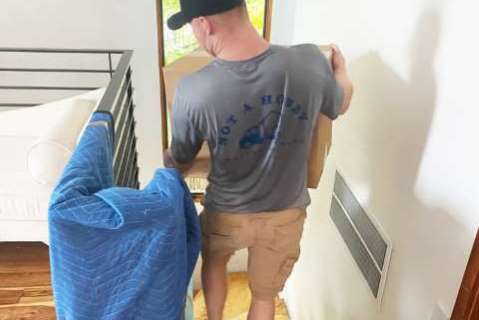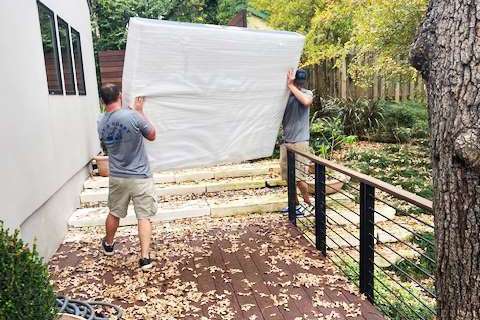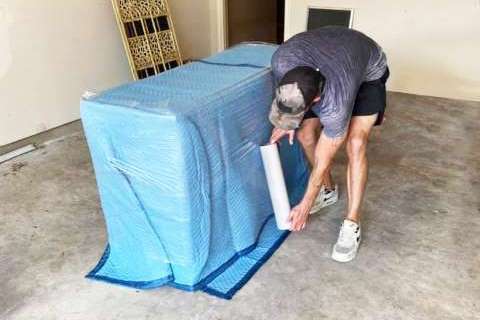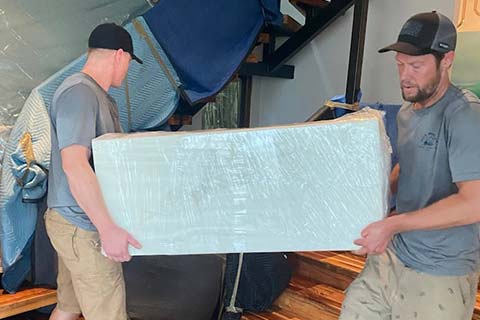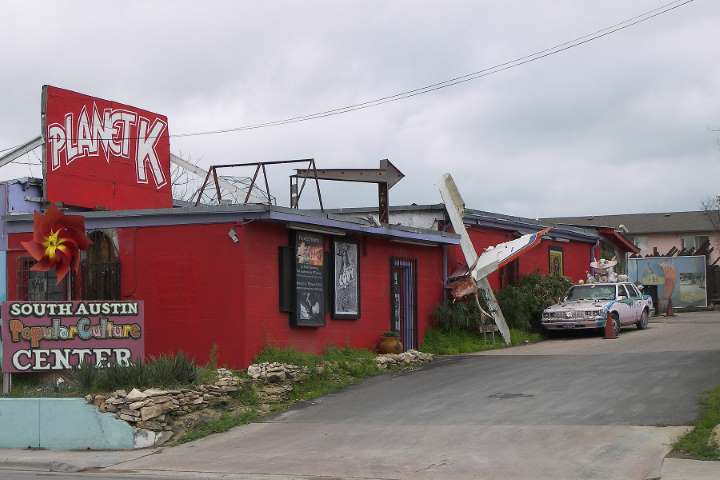LONG DISTANCE MOVERS IN AUSTIN, TX
Let’s Make This Move Fast, Fun & Affordable
- 900+ Five Star Reviews
- Loading / Unloading Services
- Shrink Wrap & Tape Included
- Free Blankets & Pads Included
- Packing & Unpacking Services
- Furniture Disassembly & Reassembly
- Hauling & Removal
- Long Distance Moving
or CALL US NOW: (512) 826-8833
Your Local Moving Team
Need dependable Austin Long Distance Movers you can trust?
Not A Hobby Moving offers top-rated moving services in Austin, specializing in local moves across Austin, as well as long-distance relocations within Texas.
Our professional movers ensure your belongings are handled with care from start to finish. We make the process smooth and stress-free.
Contact Not A Hobby Moving for expert service backed by experience and local know-how.

Cross Country & Interstate Moving Services in Austin
Not A Hobby Moving is your answer to finding affordable, reliable, and expert cross country moving companies in Austin.
We offer full moving services that include packing, unpacking, loading, and unloading.
Our movers bring a can-do attitude, timeliness, transparency, and open communication. We make moving enjoyable and to us, “it’s not a hobby fellas!”
We may not be ruling the golf course, but we are ruling the moving industry in Austin.
Your belongings are safe and secure in the hands of our experts. We have the moving experience in Austin you are looking for.
Contact us for your free moving quote. Our blog has lots of helpful articles on moving tips and strategies to help you in your next move.
Hourly Pricing
Available
Locally Owned
& Operated
Free
Estimates
Satisfaction
Guaranteed
Offers
Insurance
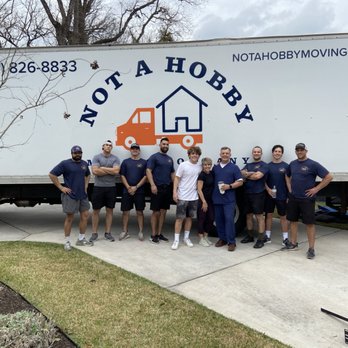


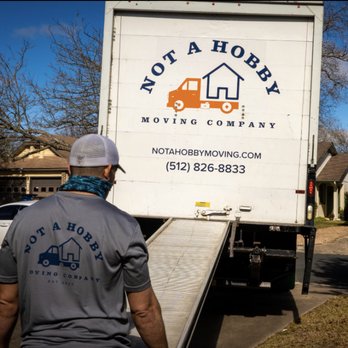
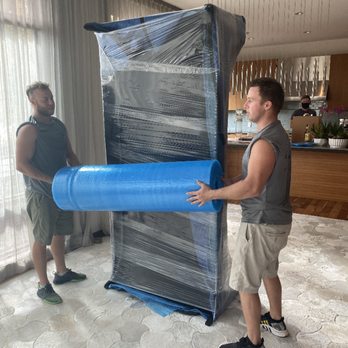
Expertise

Not A Hobby Moving was founded in 2020. Together we bring over seven years of experience in the moving industry to our business. We are proud to serve our Austin community and all the surrounding neighborhoods – and the state of Texas.
Safety

Our moving professionals use the highest standards of safety during your move. Using the OSHA safety standards, our team members follow the federal regulations and use them to ensure not only the safety of our team but our clients as well.
Available 24/7

Not A Hobby Moving is available for our clients 24 hours a day, 7 days a week. We provide these services because moving is not always easily facilitated during business hours.
Ready to Move? Get A Free Quote
Our Services
Moving Services
Additional services
Ready to Move? Get A Free Quote
Reliable Long-Distance Movers in Austin, TX
Relocating out of town? If you’re heading a long distance within Texas, Not A Hobby Moving offers dependable long-distance moving services in Austin tailored to make your transition smooth, efficient, and stress-free. We’re not just another long distance moving company—we’re a team of seasoned professionals who understand what it takes to move your life, not just your boxes.
If you’ve been searching for long distance movers near you or comparing long distance moving companies in Austin Texas, we’re here to make the decision easy.
 Why Choose Not A Hobby for Your Long-Distance Move?
Why Choose Not A Hobby for Your Long-Distance Move?
Long hauls come with a unique set of challenges—from planning routes to securely loading fragile items for multi-day drives. Our crew handles it all. As one of the top-rated long distance movers Austin TX, we offer more than muscle—we bring precision, care, and coordination.
Here’s what separates us from the pack:
-
Protective Packing & Handling – We use premium materials and strategic packing methods to minimize risk during long trips.
-
Modern Equipment – Our trucks are built for long distance, ensuring your belongings stay secure on the road.
-
Efficient Route Planning – Whether you’re headed north, east, and within Texas, we deliver on time, every time.
-
Upfront Pricing – Get a custom quote without worrying about surprise charges.
Looking for professional long distance movers near you? Our experienced team has you covered.
Our Long-Distance Moving Services
We provide a range of long-distance moving solutions designed to match your situation. Clients looking for residential long distance movers in Austin trust us to handle everything from fragile antiques to full-home moves.
-
Residential Moves – Perfect for homes, townhouses, and apartments
-
Commercial Relocation – For offices, studios, or warehouse transitions
-
Cross-Country Moving – We’re the go-to cross country movers in Austin
-
Furniture & Specialty Items – From pianos to oversized couches
Planning to move soon and searching for long distance movers in my area or long distance moving company near you? We deliver services that are precise, professional, and punctual.
 Austin-Based. Statewide & Nationwide Coverage.
Austin-Based. Statewide & Nationwide Coverage.
We’re proud to serve the entire metro area, including North Austin long distance movers, Cedar Park, Westlake, Round Rock, and Sunset Valley. If you’re moving across the state or out of it, and looking for long distance movers Austin or nationwide movers near me, we’re ready to handle the journey.
Even if your destination is thousands of miles away, our team treats your move like it’s happening just down the road. That’s why we’re a top choice for best long distance movers in Texas and among the highest-rated cross country movers Austin TX has to offer.
Get a Free Quote for Your Move
Don’t settle for cheap long distance movers near you who sacrifice service. At Not A Hobby Moving, we combine fair pricing with premium care. If you’ve been looking for best long distance movers in Austin, your search stops here.
📞 Call us or fill out the quick form to get your long distance moving quote and let us help you make your next move the easiest one yet.
Ready to Move? Get A Free Quote
Expertise

Not A Hobby Moving was founded in 2020. Together we bring over seven years of experience in the moving industry to our business. We are proud to serve our Austin community and all the surrounding neighborhoods – and the state of Texas.
Safety

Our moving professionals use the highest standards of safety during your move. Using the OSHA safety standards, our team members follow the federal regulations and use them to ensure not only the safety of our team but our clients as well.
24/7 Available

Not A Hobby Moving is available for our clients 24 hours a day, 7 days a week. We provide these services because moving is not always easily facilitated during business hours.
Long Distance Moving Services FAQs:
How do I hire movers?
To hire long-distance movers, start by researching long distance moving companies, requesting quotes, and verifying their credentials. Read reviews, compare services and pricing, and check for additional costs. Be cautious of red flags, review the contract thoroughly, and consider insurance options. Book your move early and prepare for your moving day, keeping communication lines open with your mover for a successful long-distance relocation.
How can I make my long-distance move easier?
To simplify your long-distance move, start early by planning and organizing well in advance. Declutter your belongings before packing, and create a detailed moving checklist to stay organized. Hire experienced movers and pack strategically with clear labels. Keep essential items in a separate box for immediate use upon arrival. Plan your travel route if driving, transfer utilities, and update your address with relevant parties. Keep important documents with you and maintain open communication with your moving company. Research your new area, prioritize self-care, and consider enlisting help from friends or family. Have a contingency plan for unexpected delays to ensure a smoother, less stressful move.
How much do long distance movers cost?
The cost of long-distance movers can vary significantly depending on the distance of the move, the volume of your belongings, the time of year, and additional services you may need. A long-distance move within the same state might cost around $2,000 to $5,000, while cross-country moves can range from $4,000 to $10,000 or more. Get an accurate estimate based on your specific circumstances. The weight or volume of your items, the distance traveled, packing services, moving insurance, and any additional services like packing, unpacking, or storage can affect the cost of your move.
How can I save money on a long distance move?
Saving money on long-distance moving services requires strategic planning and smart choices. Here are several tips to help you reduce costs:
Declutter Before Moving: The less you have to move, the cheaper your move will be. Sell, donate, or dispose of items you no longer need or want.
Compare Moving Quotes: Get estimates from multiple moving companies. Compare services, prices, and reviews for the best value. Consider reliability and service quality, not just cost.
Choose the Right Moving Date: Moving rates vary based on the time of year, month, and week. Avoid peak moving seasons (like summer) and aim for mid-week, mid-month dates when demand is lower.
Get Moving Insurance: This can save you money if any of your items are damaged or lost during the move. Consider additional moving insurance.
Tax Deductions: If your move is related to a new job, you might be eligible for tax deductions on moving expenses. Keep your moving receipts and consult with a tax professional to see if you qualify.
Lighten the Load: The more your shipment weighs, the more it will cost. Be ruthless in reducing your belongings to essentials.
By implementing these strategies, you can significantly lower the costs associated with a long-distance move, making it more manageable and budget-friendly.
Also, to reduce the cost of your long-distance move, consider these approaches. Start by decluttering and eliminating items you don’t need to reduce the volume of your move, which can lower moving costs. Select an off-peak mid-month moving time or a weekday to save on expenses. If you’re packing your belongings yourself, gather supplies and follow a systematic approach.
Some movers offer cost-effective packages that provide packing supplies. It can be much easier and faster to let the movers pack you because they are very efficient and quick. Often the most cost-effective move is a full-service move.
Ask about discounts, promotions, or package deals, like discounts for seniors, veterans, or students. Be well-organized on moving day to minimize labor costs, and carefully review your moving contract for hidden fees. Consider insurance options to balance coverage and cost, and plan your move well in advance to avoid last-minute expenses.
How much should I save for a long distance move?
To estimate your savings goal for your move consider that in-state moves cost approximately $2,000-$5,000 and cross-country moves cost around $4,000-$10,000+. Packing or storage may be an additional cost. Include travel costs if driving, moving insurance, and unexpected expenses like cleaning and utilities setup. Figure in deposits for housing, and an emergency fund. Adding a buffer to your savings is wise to handle surprises or plan changes. Determine your target by calculating these factors based on the specifics of your move.
What to avoid taking on a long distance move?
When planning a long-distance move, there are some belongings to consider leaving behind or avoiding altogether to streamline the process and reduce costs:
Bulky and Unused Furniture: Bulky or oversized furniture that doesn’t serve a significant purpose in your new home can be left behind. Consider selling or donating these items to reduce moving expenses.
Perishable and Frozen Food: Food items that can spoil or expire during the move should be consumed, donated, or discarded. It’s not practical to transport perishable goods over long distances.
Hazardous Materials: Avoid packing and moving hazardous materials like chemicals, explosives, flammable liquids, and gasses. These items can pose safety risks during transportation and in some cases are not allowed to cross state lines.
Duplicates and Unwanted Items: Take the opportunity to declutter by leaving behind duplicate items, old clothing, and belongings you no longer need or use. This reduces the volume of your move.
Cheap or Damaged Furniture: Consider whether it’s worth transporting inexpensive or damaged furniture. Sometimes it’s more cost-effective to replace these items at your new destination.
Plants: Transporting plants across long distances can be challenging and may not be allowed due to agricultural regulations. Consider giving away or selling your plants locally.
Outdated Electronics: Old or outdated electronic devices may not be worth the effort and cost of moving. Donate or recycle them and invest in newer models if needed.
Used Packing Materials: Don’t hoard used or damaged packing materials from previous moves. Fresh packing supplies are more reliable in ensuring your items arrive safely.
Excessive Clothing: Reduce your clothing load by leaving behind items you no longer wear. Consider donating or selling clothes to lighten the load.
Non-Essential Documents: Digitize important documents and files to avoid taking bulky paper copies. Securely store digital copies in the cloud or on an external drive.
Broken or Worn-Out Items: Discard broken or heavily worn-out items that are no longer functional or valuable.
By avoiding these items, you can simplify your long-distance move and save on moving costs.
What to do before moving across the country?
To move across the country efficiently, follow these steps:
- Moving Plan: Draft a timeline-based checklist of tasks.
- Declutter: Reduce belongings to lower moving costs.
- Mover Research: Get quotes and check reviews of cross-country movers.
- Budget: Allocate funds for moving and initial expenses.
- Secure Housing: Arrange new living accommodations in advance.
- Address Update: Notify your change of address to relevant parties.
- Utilities Setup: Schedule utility transfers to your new home.
- Pack Wisely: Start early with non-essentials, label boxes, and keep an inventory or hire professionals for packing and unpacking services.
- Travel Arrangements: Plan your travel, including arrangements for pets and vehicles.
- Essentials Box: Prepare a box for immediate needs upon arrival.
- Records Transfer: Update legal, medical, and school records.
- Insurance: Ensure moving and personal items are insured.
- Farewells: Say goodbye to friends and start networking in the new location.
- Final Check: Do a walkthrough of your old home; confirm moving details.
- Emergency Kit: Keep essential documents and a first-aid kit accessible.
This concise list covers the essentials for a streamlined cross-country move, focusing on organization, efficiency, and preparedness.
What should I consider before choosing a long distance moving service?
A long distance move can be highly stressful, so you want to ensure you get the best long distance moving services you can trust. Before choosing long distance movers, call us at Not A Hobby Moving.
We have a superior reputation for executing stress-free long distance relocations. Consider if you want to prepare for a full-service move that includes an array of services including packing, unpacking, furniture disassembly and reassembly, and other services.
We provide moving services like packing, storage, and special care for fragile items. Our detailed quotes include potential costs and avoid surprises. Our expert moving team provides exceptional customer service that is responsive and clear.
How do I prepare for a long distance move?
Draft a detailed moving checklist including timelines to keep you on track. Start the decluttering process early, sorting through your belongings to reduce the volume and save on costs. Research and obtain quotes from movers to ensure a smooth transition.
Organize important documents in one accessible place. Pack non-essential items in advance to avoid last-minute rushes. Arrange for utility services to be set up at your new home and cancel the old one. Update your address to ensure you receive your mail.
Pack an essentials box with items you’ll need immediately. Plan your travel arrangements to ensure a timely and stress-free arrival at your new destination.
What are the common challenges of long distance moving and how can I overcome them?
Long-distance moving comes with challenges, ranging from logistical to personal adjustments. Here are some common issues and strategies for overcoming them:
- Planning and Organization
Challenge: A long distance move can overwhelm you, involving numerous details and logistics.
Solution: Create a moving checklist and timeline. Break down tasks into manageable segments and start planning well in advance.
- Budgeting
Challenge: Costs for long-distance moves escalate quickly, including transportation, packing services, and unforeseen expenses.
Solution: Get multiple quotes from reputable movers to compare prices. Declutter to reduce the load and consider packing yourself to save on costs. Set aside a contingency fund for unexpected expenses.
- Packing and Protecting Belongings
Challenge: Ensure that all items are properly packed and protected for a long journey.
Solution: Use quality packing materials and follow best practices for packing fragile items. Label boxes clearly. For valuable or oversized items, consider professional packing services.
- Choosing the Right Moving Company
Challenge: Finding a reliable moving company that offers quality service at a reasonable price is crucial.
Solution: Research moving companies thoroughly, check reviews, verify credentials, and ask for recommendations. Ensure they have experience with long-distance moves.
- Handling Paperwork and Legalities
Challenge: Updating documents, transferring services, and understanding state regulations can be complex.
Solution: Make a list of documents that need updating and services to be transferred. Start this process early to avoid last-minute stress.
- Emotional and Physical Stress
Challenge: The physical toll of moving and emotional stress can affect your well-being.
Solution: Take care of your health, get enough rest, and maintain a positive outlook. Seek support from friends and family.
- Settling In and Adjusting
Challenge: Adapting to a new environment, finding community resources, and establishing new routines takes time.
Solution: Explore your new area and connect with neighbors.
- Timing and Flexibility
Challenge: Delays and scheduling issues can arise, impacting your move-in timeline.
Solution: Build flexibility into your moving plan and keep a buffer for unforeseen delays. Stay in touch with your movers for updates.
What packing strategies should I employ for a long distance move?
For an effective long-distance move, declutter first to reduce the number of items and your costs, then invest in high-quality packing materials.
Begin packing early and wrap fragile items individually, disassemble furniture to save space, and pack heavy objects in small boxes.
Create an essentials box for the first night. Consider special packing for valuable items. Use suitcases for heavy or essential items, ensuring a smoother and more organized move.
How can I ensure my belongings are safe during a long distance move?
Our moving team adheres to the highest safety protocols throughout your relocation process. By implementing OSHA safety standards, our team complies with federal regulations, guaranteeing the safety of both our staff and our clients. You can trust Not A Hobby Movers to keep your belongings safe until they get to your new location.
What is the best way to estimate the cost of a long distance move?
To accurately estimate the cost of a long-distance move, request estimates from multiple reputable movers after creating a thorough list of your belongings. Ensure their quotes cover all services and fees, including packing and insurance. Compare these estimates, taking service quality and costs into account, and remember that moving prices can fluctuate with seasonality. This strategy provides a solid foundation for budgeting your move effectively.
How long does a long distance move typically take?
The duration of a long-distance move can vary significantly based on the distance, the schedule, and the time of year. Long-distance moves can take a few days to a couple of weeks. For moves spanning several hundred miles, the delivery window can range from 2 to 5 days. Further moves take longer, perhaps 10 to 14 days or more. Discuss timing and schedules with your moving company upfront, to get a more accurate estimate based on their logistics and additional services that might affect timing.
What items should I not pack for a long distance move?
Professional moving companies have restrictions on certain items for long-distance moves, including hazardous materials (explosives, flammable liquids, and corrosives), perishable goods (food and plants), pets, and valuable or personal items (important documents, jewelry, electronics). Consult with your movers ahead of time to understand their policies and prepare alternative arrangements for these items.
How can I reduce the stress of moving long distance?
Reducing the stress of a long-distance move involves early planning and organization.
Plan and create a list of what needs to be accomplished and when. Call us at Not A Hobby Moving and we can help you plan for a full service move where we take care of everything for you including packing and unpacking, furniture disassembly and reassembly, loading and unloading, transporting, and moving specialty or larger items.
This will reduce stress for you and your family so you can concentrate on adapting to your new home.
What are the best practices for hiring a long distance moving company?
- Research: Look into movers with good online reviews on BBB, Google, and Yelp.
- Licensing: Check for a valid USDOT number for interstate moves.
- Estimates: Get and compare in-home quotes from several companies.
- Insurance: Understand and select the right insurance coverage.
- Contracts: Read the agreement carefully, noting all fees and dates.
- Experience: Choose a mover experienced in long-distance moves.
- Services: Confirm if additional services like packing are available.
- Communication: Opt for companies with effective communication.
- Delivery Window: Be aware of the delivery range, not a fixed date.
- Payment: Know payment details, avoiding large deposits.
Covid Statement
We are open and serving our moving clients in Austin, TX during the pandemic. We have put specific protocols in place to help keep our moving specialists and our clients safe during this time. We encourage contactless interactions and promote social distancing between our movers and clients. The CDC provides guidelines for proper hand hygiene and the use of cloth masks for protection.
Please help us by using CDC guidelines during this time for a smooth transition and moving experience. Together we can make your move safe.

